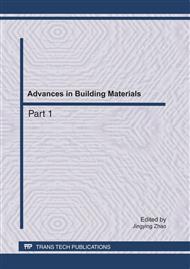p.918
p.923
p.928
p.933
p.938
p.943
p.947
p.952
p.957
Analysis on the Embankment Settlements Induced by Slurry Shield Under-Tunnelling
Abstract:
Based on field settlement monitoring data in construction of Hangzhou Qiantang River tunnel, the settlements of the embankment induced by two shields respectively were compared. The study shows that: 1.The settlements of the embankment induced by the west shield are larger, which are accounted for sustained rainfall, severe fluctuation of the chamber pressure, lack of construction experience and worse control of shield driving parameters. 2. Peck equation is applicable to settlement fitting in this case history. Trough back-analysis, the traverse tough-width parameter and ground volume loss range from 0.33 to 0.47, 0.99% to 1.57% respectively for the embankment settlements above the west tunnel, and from 0.24 to 0.34, 0.25% to 0.52% for the east tunnel. 3. Good control of shield driving parameters contributes to small disturbance to surrounding soils, thereby decreasing the induced settlements of the embankment.
Info:
Periodical:
Pages:
938-942
Citation:
Online since:
May 2011
Authors:
Keywords:
Price:
Сopyright:
© 2011 Trans Tech Publications Ltd. All Rights Reserved
Share:
Citation:


